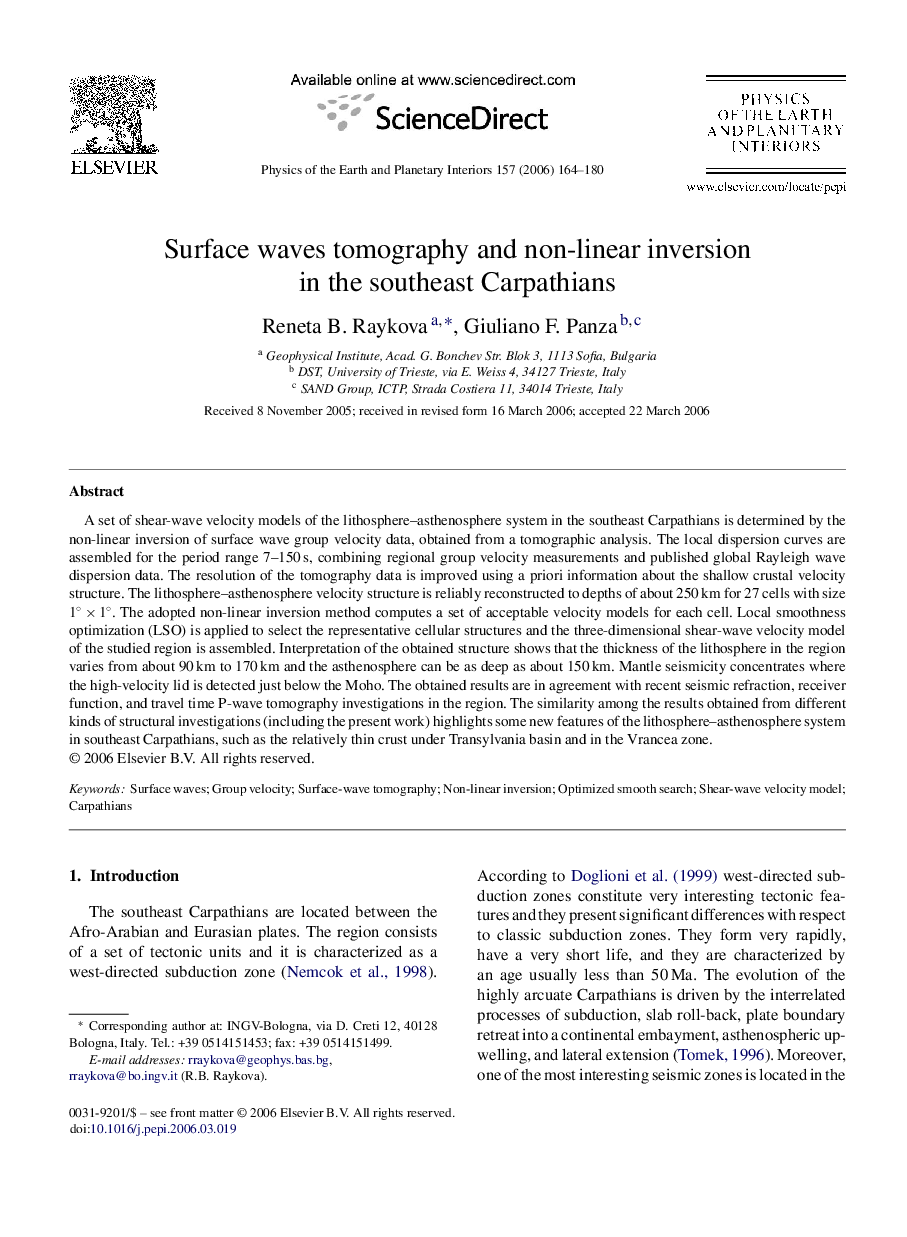| Article ID | Journal | Published Year | Pages | File Type |
|---|---|---|---|---|
| 4742960 | Physics of the Earth and Planetary Interiors | 2006 | 17 Pages |
A set of shear-wave velocity models of the lithosphere–asthenosphere system in the southeast Carpathians is determined by the non-linear inversion of surface wave group velocity data, obtained from a tomographic analysis. The local dispersion curves are assembled for the period range 7–150 s, combining regional group velocity measurements and published global Rayleigh wave dispersion data. The resolution of the tomography data is improved using a priori information about the shallow crustal velocity structure. The lithosphere–asthenosphere velocity structure is reliably reconstructed to depths of about 250 km for 27 cells with size 1° × 1°. The adopted non-linear inversion method computes a set of acceptable velocity models for each cell. Local smoothness optimization (LSO) is applied to select the representative cellular structures and the three-dimensional shear-wave velocity model of the studied region is assembled. Interpretation of the obtained structure shows that the thickness of the lithosphere in the region varies from about 90 km to 170 km and the asthenosphere can be as deep as about 150 km. Mantle seismicity concentrates where the high-velocity lid is detected just below the Moho. The obtained results are in agreement with recent seismic refraction, receiver function, and travel time P-wave tomography investigations in the region. The similarity among the results obtained from different kinds of structural investigations (including the present work) highlights some new features of the lithosphere–asthenosphere system in southeast Carpathians, such as the relatively thin crust under Transylvania basin and in the Vrancea zone.
